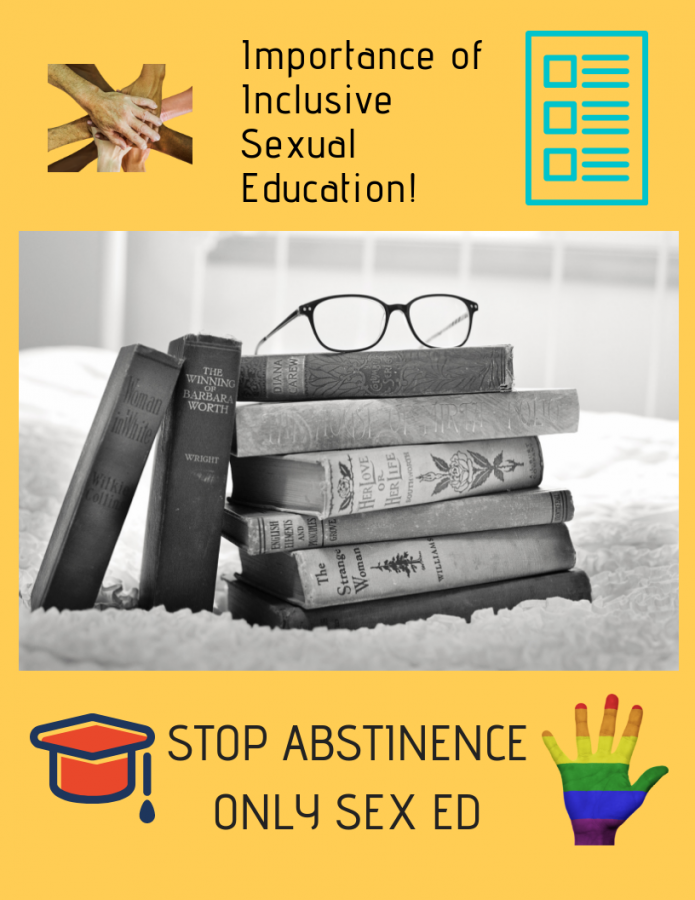Let’s Talk About Sex Ed
September 18, 2018
Let’s talk about sexual education in schools. Currently, there are two main categories of teaching for Sex Ed. It might seem like a weird topic to talk about, but it is very relevant and important!
The first, and more widespread, category is abstinence only Sex Ed. Abstinence-only sexual education is a form of Sex Ed. that teaches not having sex outside of marriage. It often excludes other types of sexual and reproductive health education, such as birth control and safe sex. The second is Comprehensive Sex Ed. Comprehensive sex education is a sex education instruction method based on-curriculum that aims to give students the knowledge, attitudes, skills and values to make appropriate and healthy choices in their sexual lives. Comprehensive sex education is highly effective, inclusive, and not as broad as Abstinence-only. Why is this important, and how does it affect you? Here’s why.
A total of 37 states require that sex education include abstinence: Twenty-six require that abstinence be stressed, while eleven simply require that it be included as part of the instruction. States are requiring Abstinence-only, even though it isn’t fully beneficial. In 2010, the Obama administration started offering grants to help schools back away from abstinence-only and integrate evidence-based lessons into their sex education. Resources say that in 2010, many schools in Kansas stopped teaching abstinence-only, and the state’s teen pregnancy rate declined 9 percentage points. This is empirically proven to be effective, even in our home state! Why have we backed away from it? The main reason is funding. The federal government does have a say, however, on sex education both in and out of schools. The administration, Congress, and government agencies like the Department of Health and Human Services (HHS) all play roles in creating additional funding streams, allocating money, and deciding what programs need to look like in order to qualify for that money. Some of these funds—such as the Teen Pregnancy Prevention Program (TPPP)—are administered directly by the HHS, which means the agency decides which organization gets the money and what it does with it. Others—like the Title V abstinence-only funding stream—are given to states in the form of block grants, and the state decides exactly which programs to fund.
There are many other benefits of comprehensive sex education, which is just more reasons we should implement and require the program. Currently, the United States continues to have one of the highest teen birth rates and some of the highest rates of sexually transmitted disease in the industrialized world. Every hour in this country, 70 teenagers become pregnant, 1,100 youth acquire an STD and one young person contracts HIV. The newspapers are full of accounts of sexual assaults on college campuses, and violence and harassment continue to plague many of our gay and gender-nonconforming youth. If we were to impose this curriculum, it only logistically makes sense that more people would be educated enough to keep themselves safe, practice consent, and understand the LGBTQ community (as there are no other classes that cover this crucial information). Comprehensive sex education delivered in schools from kindergarten through 12th grade is the best way to provide truly LGBTQ-inclusive sex education and ensure positive sexual health outcomes for all youth.
If you’re worried about parents not wanting their children to participate in this curriculum, due to religious beliefs or anything along the lines of that, they can meet with the principal and counselor to discuss and sign off on an alternative. There is no reason we shouldn’t implement a very important class, that could potentially save lives. We should always find ways to educate our children on how to protect themselves and their peers.














